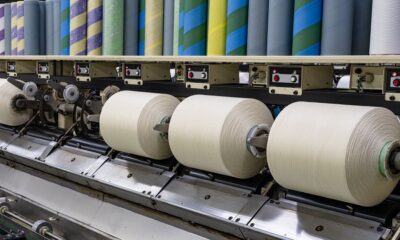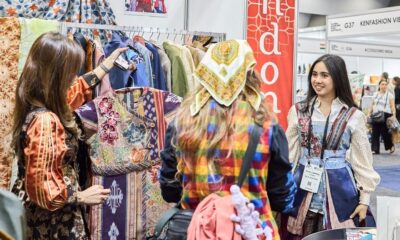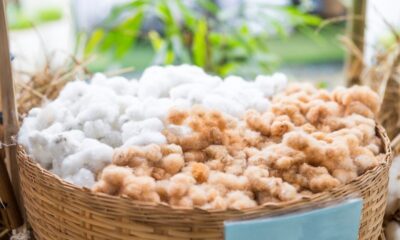Fashion
VDMA members showcase energy-saving advances in finishing & dyeing
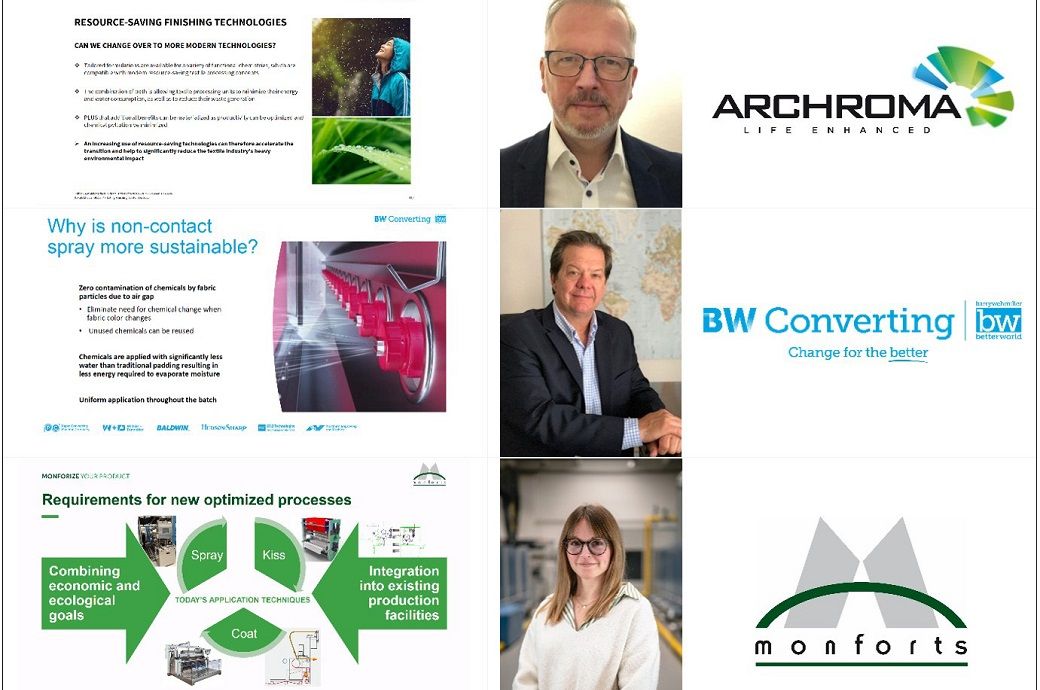
During a recent webinar organised by Germany’s VDMA textile machinery association, specialists from the three companies provided details of the range of new energy-saving options that is now available to mills.
VDMA’s recent webinar highlighted new resource-efficient finishing and dyeing technologies from Monforts, Archroma, and BW Converting.
The Baldwin TexCoat G4 system with Archroma formulations and Monforts MONTEX stenters has achieved major water and energy savings, notably in Pakistan.
The partners now extend innovation to dyeing with the new TexChroma system, debuting at ITMA Asia + CITME 2025.
In particular, BW Converting’s Baldwin TexCoat G4 precision spray technology – in combination with advanced Archroma finishing formulations and Monforts MONTEX stenters and MONFORTEX shrinking ranges and related technologies – is pushing the envelope in new standards for sustainable and long-lasting clean productivity.
Functionality
Michael Schuhmann, Global Marketing Finishing at Archroma Textile Effects, explained that typical key functions provided in textile finishing include sweat and odor control, water repellence and UV resistance. Softeners are primarily applied to make fabrics more comfortable while other finishes provide reduced crease formation for easy-care properties. The traditional padding or exhaust techniques for applying these finishes require huge volumes of water and energy intensive drying.
Spray application, by contrast, requires much less water due to drastically reduced ‘pick up’ – the amount of liquid that a fabric absorbs and retains, determining how much finishing agent remains in the fabric. This also enables significantly faster drying, making process speeds of up to 100 metres per minute possible, depending on the fabric.
“As the global fashion brands commit to reducing their emissions, the textile processing industry must respond by adopting safer chemistries with resource-saving processes such as spray application,” Schuhmann said.
Precision
Rick Stanford, Vice President Global Business Development for Textiles at BW Converting, explained that at the core of the Baldwin TexCoat G4 technology are precision valves that were originally developed for the offset printing industry and have been refined over the past 40 years through more than 40,000 installations globally.
“These enable extremely precise spray flows which are controlled by proprietary software algorithms,” he said.
Over 100 TexCoat G4 units have been installed worldwide and all three companies are enjoying notable success with bed sheeting manufacturers in Pakistan.
“Our first TexCoat G4 in Pakistan was installed in Spring of 2024 for a manufacturer using Archroma chemistry and a ten-chamber Monforts MONTEX stenter,” Stanford explained. “When using the padder at this mill, the pickup rate was 65% and with TexCoat G4 we were able to reduce that to 27%. As a result, the customer was able to increase the MONTEX speed from 60 metres a minute to 100 metres a minute, while also reducing the operating temperature in the stenter. We have subsequently sold 30 TexCoat G4 units in Pakistan, driven primarily by the system’s proven productivity and efficiency gains.”
Energy savings
“A BW Converting Baldwin TexCoat G4 unit is now installed at the Monforts Advanced Technology Center (ATC) for trials and fully complementing spray finishing operations are our multiple energy saving innovations,” added Saskia Kuhlen, Monforts Engineer for Textile Technologies. “MONTEX stenters are equipped with the TwinAir air volume regulation system as well as the TwinTherm system for temperature control and feature CADstreamE variable nozzles. These features enable full adjustment to a specific fabric width for either higher operational speeds or lower electrical energy. A further benefit is the150-mm wide advanced insulation system inside the stenter frame”.
Further Monforts modules for optimizing processes include the coaTTex unit for the knife coating of paste and foam application and the EcoApplicator, a kiss-coating technology for the indirect application of finishes on one or both sides of a fabric, with a stenter production speed up to 100m/min. Both can be integrated into existing lines.
The Monforts Energy Tower and EcoBooster are meanwhile modules for air/air heat exchanging, for heat recovery from the exhaust flow of thermal systems. They can also be retrofitted to existing stenter frames, relaxation dryers, infrared pre-dryers and hotflues.
“We continue to explore the best heating options for every customer, with optimised combinations in order to make our lines as energy efficient as possible,” Kuhlen said. “We have also been deeply investigating the potential of green hydrogen as a further option for the future.”
BW Converting’s Baldwin TexChroma
In response to a big market demand, the three technology partners are now turning their attention to the dyeing process.
At ITMA Asia + CITME in Singapore, from October 28-31, they will introduce the resource-saving combination of THERMEX continuous dyeing ranges with the new BW Converting Baldwin TexChroma spray dyeing system.
“We are excited to introduce the Baldwin TexChroma because spray dyeing is the future,” said Stanford. “We’ve been cautious about providing details on TexChroma too early, but now we’re ready and look forward to outlining its benefits in Singapore with interested customers. We will also be installing a TexChroma unit on a THERMEX line at the Monforts ATC in 2026.”
Monforts is at stand A301 in Hall 3 at ITMA Asia + CITME and BW Converting at stand B201 in Hall 8.
Note: The headline, insights, and image of this press release may have been refined by the Fibre2Fashion staff; the rest of the content remains unchanged.
Fibre2Fashion News Desk (KD)
Fashion
Global manufacturing momentum weakens in November
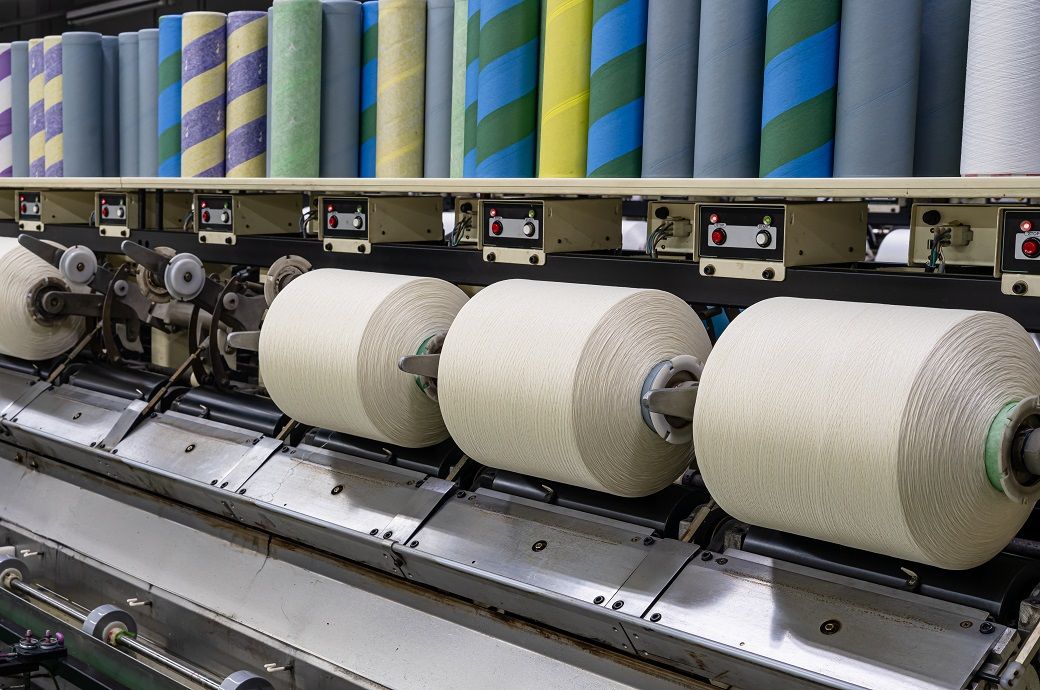
Although three of the five PMI components continued to reflect improving operating conditions, employment and stocks of purchases contracted. Production and new orders rose for the fourth straight month, supported by consumer and intermediate goods, but investment goods saw renewed declines.
Thailand, India, Vietnam, Colombia, Pakistan and the US led global output rankings. The euro area and the UK registered mild growth, Japan contracted, and China saw output stagnate. Export demand remained a drag: global new export orders fell for the eighth consecutive month, though at the slowest pace in the current downturn. Developed markets such as the US, Japan and the euro area saw declines, while emerging markets, including mainland China and India, recorded increases.
Global manufacturing growth softened in November as the PMI slipped to 50.5, reflecting slower gains in output and new orders and a return to job losses.
Consumer and intermediate goods drove expansion, but investment goods weakened.
Export demand continued to contract, while business sentiment improved slightly yet stayed below average.
Inflation pressures persisted, especially in developed markets.
Business confidence edged up to a five-month high but stayed below its long-run average for the twentieth consecutive month. Brazil, Colombia and Thailand were the most optimistic, with the UK and the US also ranking high. The new orders-to-inventory ratio reached an eight-month peak, signalling tentative resilience ahead.
Employment fell for the second time in three months, with job cuts in China, the euro area and the UK offset by gains in the US, Japan and India. Backlogs of work continued to shrink, marking forty-one straight months of decline. Inventory, purchasing activity and input stock indices all pointed to contractions.
Input costs and factory-gate prices rose again, with inflation pressures sharper in developed markets. Supply chains remained strained as average vendor delivery times lengthened for the eighteenth month running.
“The JP Morgan global manufacturing output PMI fell back 0.3-points to 51.2 in November, a level consistent with modest but resilient growth in global industry. In our forward-looking indicators, the future output PMI made a reassuring 1.4-point rebound after dropping in October, though this was tempered somewhat by a fall in the new orders index to a four-month low. By economy, output in the US and India are still expanding at solid rates, whereas the performances in China and the rest of the G-4 remain lacklustre in comparison,” Maia Crook, Global Economist at JP Morgan, said in a release.
Fibre2Fashion News Desk (KD)
Fashion
Wortmann Group’s Tamaris to launch multi-million-euro brand campaign in 2026
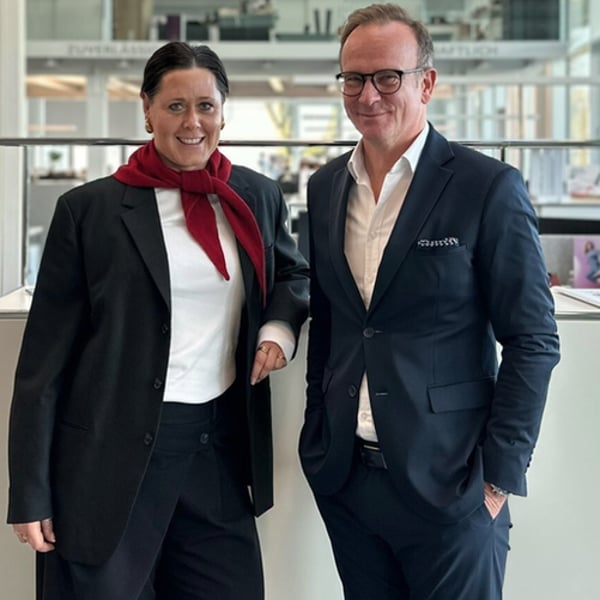
Published
December 2, 2025
With an investment of more than €100 million, Germany’s Wortmann Group plans to launch the biggest brand and retail push in its history next year with its core brand, Tamaris. The nine-figure budget will be channelled primarily into building brand awareness and retail relevance.
CEO Jens Beining and chief marketing officer Cathleen Burghardt are focusing on bringing more people into shops and stimulating demand. The aim is also to sustainably increase retail partners’ sales. At the heart of the push is a clear promise to specialist retailers: better earnings opportunities and stock that moves noticeably faster.
Retailer margins will be improved again for the AW26 season: “Margin is important for the trade- and we are continuously improving it. Equally important, however, is ensuring that stock doesn’t sit on shelves and that sell-through rates in retail rise again,” said Beining. “We create demand that converts in store. We are investing heavily in the brand so that our retail partners continue to achieve above-average success with us.”
The strategic priorities of the push are divided into five programme pillars. The first is to increase sales by optimising the brand experience. The initiative interlinks high-reach campaigns, digital touchpoints, and regional activation to channel attention directly to retail partners’ points of sale. It’s not just about visibility but about genuine added value for partners, such as brand relevance, sparking purchase intent, and increasing sales, emphasises Cathleen Burghardt.
The aim is to build loyalty and bring customers back into shops in 2026. A dedicated loyalty programme that enables personalised communications and relevant offers will support this. One of the stated goals is to increase repeat purchases and noticeably raise return-visit rates to partners’ shops.
Tamaris also aims to tap into new target groups with the men’s footwear sub-brand TMRS Men by Tamaris, among other initiatives. This will complement the existing range, increase sales-area productivity, and create cross-selling opportunities.
Women, the brand’s strong core target group, remain in focus: the extension complements rather than replaces and strengthens Tamaris as a lifestyle brand, says Cathleen Burghardt. The targeted strengthening of the European core markets and the expansion of global presence in the coming years should also increase international appeal and desirability at the point of sale (POS).
High-impact brand moments such as the recently announced partnership with Helene Fischer will act as traffic drivers. Tamaris is thus consistently relying on the power of a strong brand as a motor for retail and is creating long-term support from which partners are expected to benefit directly in their day-to-day business.
This article is an automatic translation.
Click here to read the original article.
Copyright © 2025 FashionNetwork.com All rights reserved.
Fashion
UK’s Mulberry cuts H1 loss as margin strengthens despite revenue dip
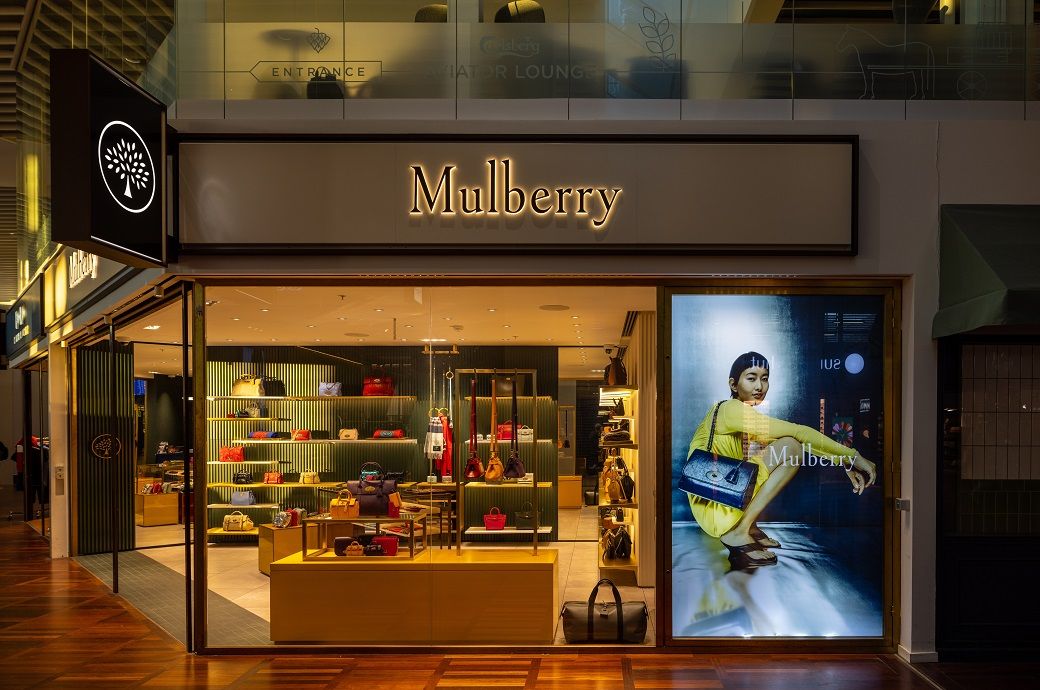
Mulberry has narrowed its H1 loss as revenue dipped 4 per cent to £53.9 million (~$70.61 million) but gross margin rose to 69.2 per cent on reduced discounting.
Retail and digital revenue fell 8 per cent, while wholesale jumped 36 per cent.
Europe grew strongly, but Asia Pacific declined 17 per cent.
Costs fell 16 per cent, helping improve profitability.
Source link
-

 Sports1 week ago
Sports1 week agoWATCH: Ronaldo scores spectacular bicycle kick
-

 Entertainment1 week ago
Entertainment1 week agoWelcome to Derry’ episode 5 delivers shocking twist
-

 Politics1 week ago
Politics1 week agoWashington and Kyiv Stress Any Peace Deal Must Fully Respect Ukraine’s Sovereignty
-

 Business1 week ago
Business1 week agoKey economic data and trends that will shape Rachel Reeves’ Budget
-

 Tech2 days ago
Tech2 days agoGet Your Steps In From Your Home Office With This Walking Pad—On Sale This Week
-

 Politics1 week ago
Politics1 week ago53,000 Sikhs vote in Ottawa Khalistan Referendum amid Carney-Modi trade talks scrutiny
-

 Tech1 week ago
Tech1 week agoWake Up—the Best Black Friday Mattress Sales Are Here
-

 Entertainment2 days ago
Entertainment2 days agoSadie Sink talks about the future of Max in ‘Stranger Things’


